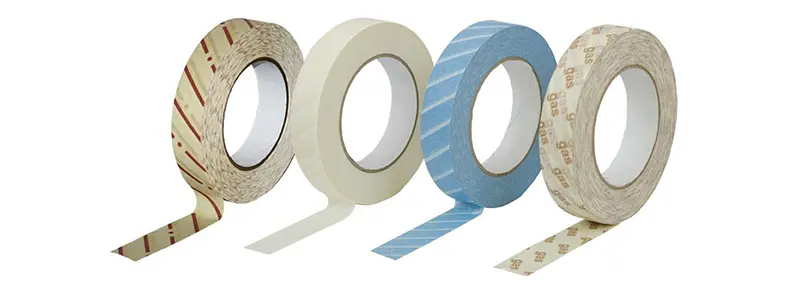
December 2019
THE DIFFERENT CLASSIFICATION OF CHEMICAL INDICATORS
Chemical indicator, any substance that gives a visible sign, usually by a colour change and calculates its parameters to achieve satisfactory sterilization is called ‘Chemical Indicator’. The chemical indicator is an extremely crucial tool that caters to different laboratory requirements and monitors laboratory sterilization. It is used as an internal and external indicator along with routine performance testing and load release.
June Enterprises offers below in-depth information regarding chemical indicator with its various types and dynamic application.
Generally, chemical indicators are either chemical or physical apparatus used to monitor single or multiple of the process parameters designed to target specific sterilization processes.
SIX CLASS DIVISION OF CHEMICAL INDICATORS
CLASS I
Class I Indicators are used with singular things, for instance, containers or cans. They directly subject the indicator for the sterilization test cycle and do not differentiate between processed and non-processed units. Indicator labels, chemical indicator strips, tapes, and load cards are examples of external and substantial chemical indicators that are physically outside the bundles.
CLASS II
Under the class II chemical indicator, the indicators are implied for use in singular test strategies as demonstrated in relevant sterilization standards. The most well-known testing in the Class II indicator is the Bowie Dick Test. These tests are proposed to show the adequacy of steam infiltration and air removal.
CLASS III
This is a specific indicator made to deliberately demonstrate the exposure to a single sterilization procedure at a stated value of the identified variable. For instance, a particular variable is a temperature tube that has a chemical tablet that dissolves at a recognized temperature.
CLASS IV
This class has different variable pointers. They respond to different critical variables and show exposure to a sterilization process at the stated value of the specific variable. They are utilized inside each package along with color change chemical indicators. For example, paper strips and more.
CLASS V
Class V chemical indicators are also known as integrated indicators that are intended to respond to every critical variable. They can be used for package control checking as internal chemical indicators in all containers and packages. These can also be used as an additional monitoring tool to enable the release of loads that don’t have inserts as indicated by Process Challenge Device.
CLASS VI
These are also called as emulating indicators as they test and verify the sterilization cycle. They are designed to react to every single critical variable for a given sequence and are highly utilized for steam sterilization. They demonstrate the complete cycle by verifying the absence or presence of essential variables, a specific temperature, and time estimation parameters during a procedure.
Chemical indicators are affordable, convenient and are utilized to show if a unit or thing has been presented to a sterilization cycle. Some contextual analyses have demonstrated that chemical indicators are more dependable and likely than biological indicators to appear accurately, the cleansing procedure at peripheral occasions.
June Enterprises offer a range of high-quality chemical indicators such as tapes, strips, labels, etc which effectively conduct Steam, ETO, Gamma, Dry Heat and Plasma sterilization. Contact us and we will help you select the type or class of chemical indicator to purchase.
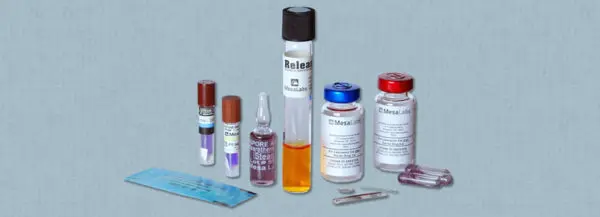
December 2019
BIOLOGICAL INDICATORS – AN OVERVIEW
The biological indicator monitors the sterilization process and equipment to provide guarantee and ensure the procedure, process and equipment are working as required to disinfect and sterilize the pharmaceutical equipment. This makes the biological indicator one of the most critical components used in the sanitization procedure.
June Enterprises provides below a complete overview regarding the benefits of biological indicators and their importance for the process of the sterilization process.
- The Sterilization Monitoring Process
Sterilization is a process that kills microscopic bacteria and pathogens in the given environment and further aids in other pharmaceutical processes. It is also called as a decontamination process. There are numerous procedures utilized for sterilization, the most well-known are ethylene oxide and steam. Sterilization strategies vary, however all serve a similar function – to wipe out any microscopic organisms. As one would expect, all types of cleansing must be checked to ensure that the entirety of the potential pathogens is effectively being destroyed. The disinfection procedure must be observed to guarantee unwavering quality and adequacy, and preparing staff must make an immediate move if any alerts are raised during sterilization.
- Difference between chemical, biological and mechanical monitoring work
Chemical monitoring describes the process of using special indicators like strips, tabs, and tapes. They contain chemicals that produce a change in color as a response to high temperatures. In sterilization, Chemical indicators have demonstrated to be truly solid in confirming that the conditions required for disinfection have been met, and the outcomes show up on the marker promptly following the cycle.
Mechanical (physical) monitoring describes the observation of the components of the sterilizer as part of routine quality control exercises. For each load, the user checks the measures, showcases and unit cycle clocks. Variations in these readings indicate that something isn’t right with the sterilizer.
Biological indicators are used in the medical sterilization setting to quantify the adequacy of the sterilization procedure and assurance the lethality of the cycle. Biological indicators are sometimes referred to as living indicators. The biological indicator is viewed as the best quality level of disinfection observing. At the point when utilized routinely, they offer the highest sterilization quality assurance in the procedure.
- The play of Biological Indicator in the Sterilization process
Biological indicators are expert sterilization monitors and are placed in small containers to perform the procedure. They are the foremost mechanism of sterility evaluation for any medical or pharmaceutical environment through the use of some of the most resistant microorganisms. The resistance of microorganisms aided them to integrate and conduct the sterilization process.
These indicators help to monitor whether the necessary conditions were met to kill a specified number of microorganisms for a given sterilization process.
It is also said, the present pharmaceutical’s achievements and outcomes would not have been possible without the indicators as they hold the ability to eliminate the pathogens for complete disinfection with providing strong quality assurance. This proves how significant is the biological monitoring methodology and thus, the biological indicator itself.
The Importance of Biological Indicators in the pharmaceutical process
A specialist from the Association for the Advancement of Medical Instrumentation (AAMI) depicts biological monitoring as “the cornerstone of your sterilization quality assurance program.” Biological indicators reveal to us whether the sterilization cycle has sufficiently eliminated microbial contaminants in a proof-positive way that can’t be accomplished by chemical and mechanical monitoring alone.
For sterilization, the biological indicator is beneficial, day by day their utilization is one of the best approaches to spot early breakdowns or blunders, significantly diminishing the further risk.
It can be said that no other monitoring process such as chemical or mechanical is as accurate as compared to the biological indicator. To know more about the types and indicators of significance, feel free to contact us anytime.
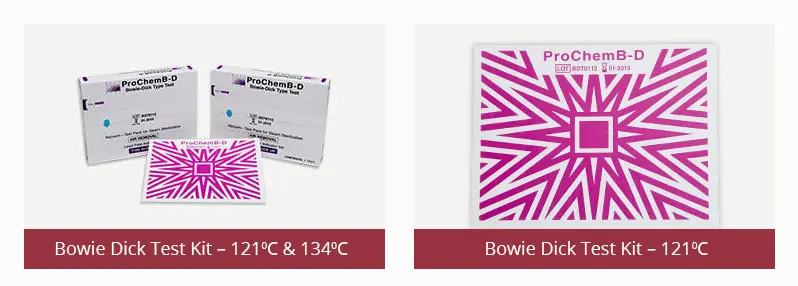
December 2019
IN-DEPTH INFORMATION ABOUT BOWIE DICK TEST
Laboratory, it’s equipment and devices are used to conduct experiments that are extremely vulnerable to chemicals and any other exposure. It is critical to provide careful attention to all the lab equipment which makes laboratory sterilization necessary. Sterilization and disinfection are different as through the process of sterilization all forms of life and quasi-living biological agents, such as viruses and prions are destroyed and completely removed.
Sterilization refers to killing all the living microorganisms that also include bacterial spores. To measure the success of steam sterilization, Bowie Dick Test is performed. It is usually performed before the pre-vacuum cycle or after the conditioning phase.
Importance of bowie dick test
1. Bowie Dick test also called as a dynamic air removal test that helps in verifying the heat penetration inside the chamber.
2. Belonging to the chemical indicator class 2, the test is effective in removing the air (condensation gases) from the chamber simply because air is a bad conductor of heat.
3. Pockets of cool air acts as a barrier that prevents steam from penetrating the load and Bowie-Dick Test here demonstrates proper air removal.
4. It’s not a substitute for sterility assurance testing and manufacturers recommend running a Bowie –Dick test before you sterilize your first load of the day.
When to perform a bowie dick test?
1. Bowie Dick Test should always be performed before the first processed load each day every time the sterilizer is used.
2. The department or room used for the sterilizer, the same room should be used every time the test is performed.
3. It should be ensured to perform the test after the major repair and every time after the sterilizer is shut down.
Where to place the bowie dick test pack?
1. The test pack should not be placed with any load in the chamber.
2. The chamber used for the bowie dick test should be complete except for the bowie dick test apparatus.
3. The test pack should be placed above the drain on the bottom rack in an empty chamber.
Interpreting the bowie dick test results
1. Once the test pack is successfully placed inside the sterilizing chamber, it is to be left alone for some time.
2. The color change in the test pack interprets the steam penetration and pulls the air out of the autoclave.
3. The FAIL test is indicated by a lighter color change in the center of the pattern than around the edges.
4. The PASS test is indicated by a uniform Black/Brown color over the entire pattern of the indicator sheet.
Reason for failure of bowie dick test
1. In the autoclave chamber, if the air can leak, it will be unable to penetrate by steam to penetrate the load to the point of total sterilization.
2. A warm-up cycle allows the jacket and the chamber to reach a particular temperature and no warm-up cycle may fail of bowie dick test.
3. If the steam traps are not checked, unwanted condensation may lead to cold spots at the base of the autoclave and which may thus lead to wet steam issues resulting in a test failure.
As June Enterprises owes to provide you with complete information, you can always feel free to seek assistance from us for all your Pharmaceutical cleaning and sterilization dilemmas.
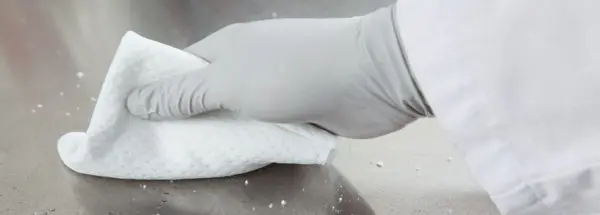
December 2019
EVERYTHING YOU NEED TO KNOW ABOUT CLEANROOM WIPERS
The cleanroom is a sensitive environment that must be monitored for pollutants and harmful airborne debris. While working in the cleanroom, it is imperative to maintain a clean environment. From pharmaceutical to semiconductor engineering, the cleanroom is a sensitive environment to monitor.
Naturally found pollutants can come in the form of dust, microbes, particles, and more. Thus, to maintain a low contamination level, Cleanroom Wipes are used. Different types of cleanroom wipe material have been developed such as cleanroom polyester wipes, non-woven wipes, sterile pre-saturated wipes, etc to offer absorbency, cleanliness, resistance to chemicals and to observe common cleanroom contaminants such as solid particles, liquids, and bio-contaminants.
Why do we need cleanroom wipes?
Cleanroom wipes play a crucial role to maintain minimum contamination in the cleanroom environment and to assure the cleanliness quality level in the restricted areas. The increasing significance of the cleanroom also increases the significance of cleanroom wipes.
The cleanroom wipes cannot ever go out of the market as they cover a wide range of industries that include pharmaceuticals, aerospace semiconductor engineering manufacturing medical devices and computer components like microchips, optics, and military applications.
What is the difference between other wipes and cleanroom wipes?
The common perception regarding wipes is that they are used to absorb spills in the cleanroom which is hardly the case. Prima facie, the cleanroom wipes are made differently to inbuilt characteristics such as lower levels of lint which aim to protect against contaminants. Cleanroom wipers are very soft which makes them great for cleaning sensitive equipment and an ideal choice for disinfecting surfaces while also ensuring sterilization.
The advantages of cleanroom wipes
In the controlled cleanroom environment, to avoid contamination cleanroom wipes are easily accessible and convenient to use. Some cleanroom wipes such as cleanroom polyester wipes, non-woven wipes, etc are made to handle specific cleaning solvents, such as IPA, and other types of solutions. Using them specifically for their use allows the team to disinfect surfaces, ensure sterilization and reduce the levels of endotoxins present in the laboratory environment.
Different types of cleanroom wipes
Cleanroom wipes differ on the basis of their uses, materials, the size of the wipe and its unique application. For instance, Polyester Cleanroom Wipes are made up of 100% filament sterile polyester that has knife cut and Polyester non-sterile wipes are made up of 100% polyester knitted in a double-knit interlock pattern that caters to excellent absorption. The non-woven wipes are available in sterile and non-sterile forms aiding in high sanitization efficiency. Apart from this, there exist more types of cleanroom wipes with their individual uniqueness suitable for your cleanroom requirements.
Best practices to follow while using cleanroom wipes
It is clear, to make the most out of the cleanroom wipes, they should be used correctly and the employees should be trained completely. The different tips to keep in mind are –
1. While using wipes, it is recommended to use the cleanroom wipes on a scheduled period. The schedule ensures an equal level of cleaning standards.
2. Utilizing one complete wipe for a small area reduces its usage capacity. Thus, it is suggested to fold or either stretch it for maximum efficiency.
3. Never re-use the wipes as it is very dangerous and can cause twice as much harm through cross-contamination.
At times, understanding everything about the product may also lead one to complete confusion regarding which and what type of cleanroom wipes should be used according to their suitability. Thus, to learn more about the cleanroom wipes, June Enterprises is just a click away. Contact Us today!
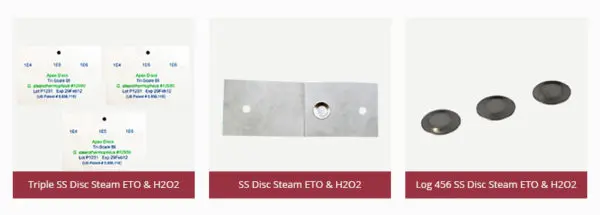
December 2019
THE SIGNIFICANCE OF VAPOUR HYDROGEN PEROXIDE
Vapour hydrogen peroxide is an industrial setting conducted to sterilize heat-sensitive devices. In a controlled environment, vapour hydrogen peroxide plays the role of a substance that eliminates all forms of microbial life, vegetative bacteria, fungi, viruses, etc. Over a long period of time, Ethylene oxide has commonly been used for sterilization. Vapour Hydrogen Peroxide is also known as VHP is considered to be the new, upcoming method for sterilization and is highly recommended by health-care facilities for being non-toxic, low-temperature practice and an environmentally safe solution.
• Application of Vapour Hydrogen Peroxide
VHP technology supports biotechnology, pharmaceutical manufacturing and related industries. It is specially developed as a solution of liquid H2O2 and water by generators specifically designed for this purpose. They are developed to adequately pass hydrogen peroxide compound in the form of vapor and circulate in pre-set concentration. This Vapour hydrogen peroxide concentration varies on the level of disinfection to be conducted.
• Process of VHP
The vaporized hydrogen peroxide sterilization follows the process in three major steps –
1. The liquid H2O2 gets converted into vapour.
2. The vapour fills the chamber, penetrating lumens by contacting all surfaces.
3. The third step involves the conversion of the vapour accumulated in the room back into its original form of oxygen and water.
• Benefits of using Vapour Hydrogen Peroxide
The positive effect and potential benefits of using VHP as a sterilization method is –
1. The production of hydrogen peroxide liquid is relatively easy and comparatively inexpensive.
2. Given the proper conditions, VHP is relatively easy to create by the breakdown of oxygen and water.
3. The VHP compound created is adjustable and adaptable for a variety of temperatures and humidity conditions
4. It is extremely effective for large volume area decontamination in terms of rooms and buildings. No separate pressure vessel is required.
• Difficulties faced while using Vapour Hydrogen Peroxide
The potential difficulties faced while using the VHP compound are –
1. The BI population affects the resistance for vapour hydrogen peroxide.
2. VHP is not compatible with the cellulosic materials normally associated with BIs for steam. Thus, EtO and dry heat processes and alternative carriers must be used.
3. Though VHP can be used at a variety of temperatures and humidity conditions, no set of standard exposure conditions exist to guide in the determination of the resistance of BIs produced for this process.
• Guidelines for VHP sterilization
The International Organization of Standardization (ISO) and the Food and Drug Administration (FDA) require VHP sterilizers to be effective and safe. The following are various safety categories to be concerned and maintained while using VHP.
1. Safety for Patient
The sterilizers must follow ISO guidelines to ensure no toxic residuals are remaining on the devices that would concern the patients.
2. Safety for Staff
The Occupational Safety and Health Administration (OSHA) and other regulatory bodies have developed strict guidelines for hydrogen peroxide exposures. Those guidelines should be maintained for staff protection.
3. Safety for device
With wide material compatibility, the VHP is safe for a wide variety of materials.
4. Safety for Environment
This type of sterilization is not harmful to the environment because water and oxygen are the only by-products of a VHP sterilization process.
For more assistance regarding mighty vapour hydrogen peroxide, get in touch with us. We would surely assist you throughout your entire sterilization process.
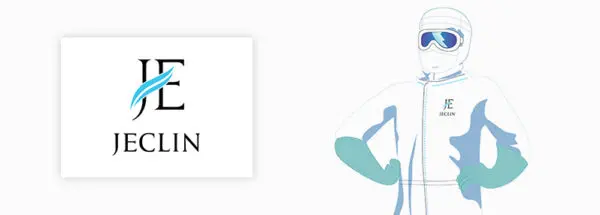
December 2019
JECLIN – THE CLEANROOM REUSABLE GARMENTS
Cleanroom garment in the world of pharmacy acts as the most essential product amongst all as it manages the health and safety of the operator.
It is said, ‘The Expert in anything was always a beginner’.
June Enterprises began its journey of becoming an expert in the pharmaceutical industry during the year 2013. From supplying a broad array of pharmaceuticals products, we take a step forward by manufacturing our own first cleanroom reusable garment – JECLIN.
What is JECLIN?
JECLIN Garment is the cleanroom product developed with the objective to provide protection with comfort. The integrity of using reusable cleanroom garments is that it ensures to be a more cost effective option in terms of good quality cleanliness standards.
JECLIN is designed and manufactured from light-weighted, non-lining monofilament polyester material which is suitable for either a sterile or non-sterile cleanroom environment. JECLIN provides an overall head-to-toe coverage solution combine range, coverall, overboots and a bag.
Given below, are the specifications regarding the JECLIN garment and its significance which makes it different from other garments?
1. NABL certified
National Accreditation Board for testing and calibration for laboratories (NABL) provides accreditation for quality consciousness in testing centers and laboratories. The recognition of laboratory accreditation from NABL is designed in accordance with the international media. JECLIN garment is validated and tested in NABL which makes it safe, valued and trusted.
2. Standardized size
Over the years of experience and knowledge, research says individual sizes for different operators in bulk orders usually result in wrong sizing and thus, delay in the flow of operations. Keeping this in mind, we have manufactured JECLIN in standardized size to suit regular specifications and avoid long delivery and wrong sizing.
3. Checks conducted
From protecting from contamination to protecting workers from hazardous chemicals, JECLIN serves an excellent cleanroom performance along with a pleasant experience for the wearer. There are various tests conducted on the garment such as washing ( Above 60° C ) of Autoclave Cycle, water absorbency of fabric, blend % of the fabric, tensile at high strength – strip, tearing strength of the fabric, the air permeability of fabric, zipper strength of the fabric and many more.
KEY BENEFITS:
1. Reusable garments are made to last for multiple uses.
2. They are made from monofilament polyester material which is fully recyclable.
3. They provide maximum comfort to the operator and minimum impact on the environment.
4. Reusable garments are the most cost-effective option covering longer duration and durability.
With years of experience and expertise, we understand the investment and quality involved in cleanroom attire. To understand other specifications, qualities and benefits of JECLIN, Please feel free to contact us and seek our expert assistance.

December 2019
JECLIN – THE CLEANROOM REUSABLE GARMENTS
As Suze Orman quotes “Cleanliness is a state of purity, clarity, and precision”, Vikan promotes the same. The word “Cleanliness” generates a sense of freshness in one’s mind but no matter how much you clean your space, be it house, clinic, office or any other environment, some inconspicuous area will be a lot dirtier than you had thought. Let’s take a traditional fruit basket as an example. You look at it every day and usually don’t think much about its cleanliness. However, cleaning such hard-to-reach areas doesn’t have to be turned into a huge project. Vikan is here to save your time and energy.
Vikan is a Denmark based company that manufactures a wide range of cleaning products, especially for the food facility. It is the world’s leading supplier of hygienic cleaning tools for the food and beverage industry and other hygiene-sensitive environments. June Enterprise is an authorized distributor of VIKAN in India. The range includes hygiene, transport, microfibre, ultra-safe technology and classic range for a long list of applications. With offering a multitudinous range of cleaning products, Vikan also caters to different range of designs and color codes.
One of the basic and main cleaning products used for any environment is cleaning brushes. They use bristles, wires, or other fibre to scrub, dust, and remove deposits from objects and surfaces. Cleaning brushes are mainly used to scrub and clean kitchens, bathrooms and clinics to sweep away dust and fine particles, remove metal, paint, and residue from equipment. Toilet brushes and scrubs are good for cleaning bathrooms and kitchens. Vikan manufactures every brush integrated with keeping any space clean, from floor brush through washing brush to detail brush for small to large areas.
Following are “SUPER 6” characteristics Vikan provides:
1) A complete brush package with 12 different colors for different brushes, making it easier to segregate between the interchangeability among the departments.
2) The correct brush with 300 ergonomic designs that suit every cleaning requirement for each application.
3) FDA Approved material to suit FSSAI requirement.
4) Use of virgin PP for great chemical compatibility and thermal stability which gives the brushes better cleaning abilities.
5) Robot manufacturing that gives you a consistent quality with designed strength.
6) The brush is manufactured with steadfast PP that avoids penetration of food particles from into the structure of the brush, subsequently avoiding microbial growth in the structure.
Vikan manufactures the widest spectrum of cleaning products for food facility you can rely on regarding your daily cleaning routine. We at June Enterprises, supply high-quality Hygiene & Cleaning Products to our customers across the nation. Our range of cleanroom services also includes food facility and so we assure you the best-in-class food facility products manufactured by Vikan.
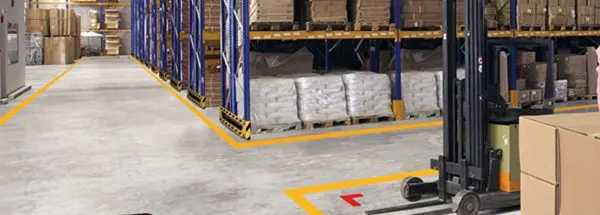
December 2019
HEAVY-DUTY FLOOR MARKING TAPE
Owning a manufacturing company is a crucial task but maintaining its units with flawless operations is an equally challenging task. Most businesses face a common problem of efficiently managing the movement of products and operators. To cope up with this, many industrialists use marking tapes in the manufacturing units and warehouses. A heavy-duty floor marking tape uses visual signals like lines, shapes, and signs on floors to provide information about a given area. This makes easier for the operators to navigate the workspace with also conveying important safety or instructional information.
In pharmaceutical and automotive industry, it is very important to preserve the quality of the product from production to its consumption by taking great care throughout the supply chain. This enhances safety, streamlines logistics, and improves organizational efficiency by maintaining the product in safe and optimal conditions. So, using heavy-duty marking tape becomes an imperative aspect of Good Manufacturing Practices.
An effective floor marking tape–
• Can be used to mark aisles, pathways, and hazardous areas
• Can help visitors find their way around unfamiliar areas
• Can define loading and unloading areas for inventory
• Can indicate where inventory should be stored
• And direct the flow of traffic within the facility
From heavy machinery to garbage cans, a floor marking tape can be multitasking in your workstation.
In the following blog-post, we are going to highlight the industrial benefits of floor marking tape.
1. As compared to painting floors, applying floor marking tape is quick and cost-effective.
2. Floor marking tape can boost organizational performance by identifying storage or staging areas of the workstation
3. Installing floor marking tape is the easiest task
4. Floor marking tape provides the best navigation assistance
5. The absence of fumes in these products avoids the risk of any explosion.
6. It is durable
7. A floor marking tape can be customized according to your requirement in any color, shape, or size.
Mightyline is a USA based company that manufactures durable safety flooring tapes and floor signs with a wide range of shapes, sizes, and colours for use in stores and warehouses. The range of mighty tapes offered by Mightyline costs lesser than paints and conventional flooring tapes. They can cope up with the pharmaceutical and automotive industrial brush scrubbers, forklifts, and heavy industrial wheel traffic while cleaning the cleanrooms. We at June Enterprises, supply these most comprehensive mighty tapes all over the world. We are a leading supplier of high-quality Pharmaceutical Hygiene & Cleanroom Products.
For more assistance regarding mighty floor marking tapes, get in touch with us. We would surely assist you throughout your entire GMP process.

December 2019
DISINFECTION AND STERILIZATION: KNOW THE DIFFERENCE
For a safer and purer process and manufacture in the pharmaceutical industry, decontamination is a crucial aspect. Since disinfection and sterilization are both decontamination processes, there still lies a major difference between both. In disinfection, the disinfectant solutions eliminate harmful microorganisms from inanimate objects and surfaces. But steam, ETO, Gamma and Dry Heat sterilization processes kill all the living microorganisms which also includes bacterial spores. While disinfection can be achieved by physical or chemical methods, sterilization can be achieved by physical, chemical and physiochemical means.
Between disinfection and sterilization lies a vertical hierarchy orientation of the cleaning process- starting from the lowest, sanitization, disinfection with levels of classification- low, intermediate and high level, decontamination, sterilization, depyrogenation and vapor phase hydrogen peroxide (VPHP).
Sanitizing refers to significantly reducing vegetative bacterial cells wherein IPA could be efficiently sprayed over the operator’s gloves. As disinfection refers to eliminating harmful microorganisms from inanimate objects and surfaces, it has three levels of classification. A low-level disinfectant kills maximum vegetative bacteria and lipid or medium sized viruses. An intermediate-level disinfectant kills the entire group of microbial pathogens except bacterial endospores. Almost all microbial pathogens and some bacterial endospores are killed by high-level disinfectant, but it may not completely affect the large numbers of resistant bacterial endospores.
Decontamination refers to reducing the microbial burden to prevent contamination. Decontamination encompasses both disinfection and sterilization but its level differs from requirement to requirement. For instance, surgical instruments would need to be decontaminated to a level of sterility but that level of microbial killing may not be necessary for environmental surfaces such as floors and walls.
Sterilization refers to killing all the living microorganisms also including bacterial spores. Next comes depyrogenation that involves the destruction of pyrogens like bacterial endotoxins. Depyrogenation is dependent on sterilization as pyrogens require temperatures well above normal sterilization process temperatures.
According to the United States Pharmacopeia, VPHP is the most effective surface sterilant or decontaminant that is capable of achieving sterilization. In the process of decontamination, a spore log reduction value of three to four is adequate because the goal is decontamination rather than sterilization.
While a six log reduction is appropriate for sterilization applications, a three to four log reduction of bacterial endospores is enough to demonstrate successful decontamination. Thus, as compared to disinfection, sterilization is more effective in the decontamination process.
For more assistance regarding pharmaceutical disinfection and sterilization, get in touch with us. We would surely assist you throughout your entire GMP process.
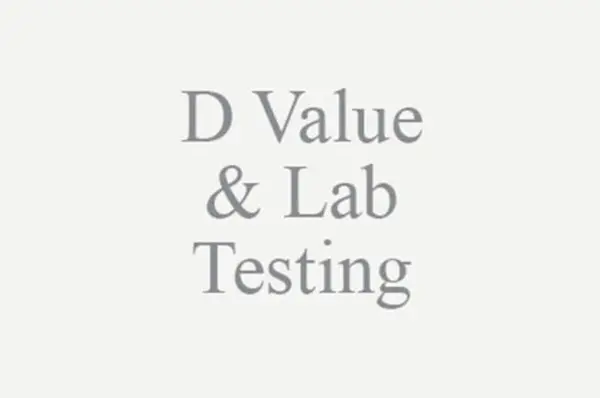
December 2019
D-VALUE FOR STERILIZATION PROCESS
Sterilization refers to the process of killing the microbial contamination present in the pharmaceutical product. The two sterilization methods commonly used are- the Bioburden Based Sterilization (BBS) method and the Overkill Sterilization (OS) method.
While the BBS method deals with the parameters based upon the predetermined type and concentration of bioburden on the material being sterilized, the OS method is based upon an arbitrarily established higher initial concentration and resistance of bioburden than expected on the material being sterilized.
But what is the bioburden of the product?
The microorganisms present in the product generally come from three main sources: the manufacturing environment, personnel, and raw materials including water. They can be viral, bacterial or fungal. Some organisms are spore formers that may be the most resistant to environmental stresses including sterilization processes. Either the product may have little or no bioburden which is dependent on the manufacturing conditions and raw materials. The product may also contain high concentrations of multiple organisms.
Thus, it ultimately becomes essential to learn as much as possible about the bioburden organisms, especially when running minimal sterilization cycles
What information do you require while characterizing the bioburden?
1. Total numbers of organisms present just before sterilization
2. Identity of organisms present
3. Number of spore formers present
4. The resistance of the bioburden
And
5. Sampling frequency and statistical analysis
Why perform a D-value study?
The most direct method for evaluating the resistance of the test organism bioburden is by performing a D-value study. When evaluating the bioburden, it is not necessary to test every organism isolated, only the most resistant can be isolated.
How are D-value studies performed?
D-value test is performed by the Survivor curve method based on the methods described in ISO 11138-1:2006 Annex C. A survivor curve, arrange the surviving microorganisms against time. This curve indicates an important graphic representation of the kinetics of the microbicidal process. The fraction negative analysis focuses on the quantal zone, which means the area where exposures to replicate units result in both positive and negative units when cultured for growth. It determines the D121- value of Geobacillus stearothermophillus suspended in Injection.
Advantages of D-Value test:-
1. D-Value can demonstrate a log-linear regression curve when doing product testing, which can be extrapolated to demonstrate the calculated SAL.
2. The product can be removed through filtration to eliminate any potential product inhibition on the injured spores.
Mesa Labs has years of experience performing these studies on a wide variety of pharmaceutical products for R&D and commercial manufacturers. The manufacturer will need to supply approximately 100 ml of product and a slant containing the bioburden isolate to have a D-Value study performed in his manufacturing unit. Mesa Labs can supply spores, traceable to ATCC if a bioburden study is not desired. A typical study consists of inoculating the product with the test organism, filling and sealing the spiked product into very small glass ampoules, performing graded exposures on the ampoules in a B.I.E.R. vessel and assaying the ampoules for surviving spores. The data collected from these exposures is used to calculate a D-value.
At June Enterprises, we provide a convenient BI challenge, which complements these studies for routine monitoring of the sterilization process. We incorporate with Mesalabs’ Bozeman Manufacturing facility to help you determine the results of spore reduction while various sterilization processes.
For more detailed information about the product and test, get in touch with us. We always got you covered.
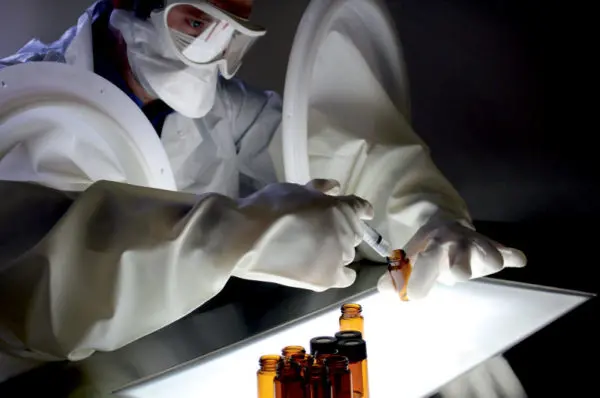
December 2019
AUTOCLAVABLE GAUNTLETS FOR PHARMACEUTICAL INDUSTRY
In a pharmaceutical manufacturing industry, working with biological materials is a fairly common practice. These materials may or may not be hazardous to the worker, but they can most certainly be sensitive to microbiological contaminants. Contamination is mostly originated by a personnel. It is important to use proper, germfree cleanroom garments in order to protect the products and the personnel from contamination. Researchers come in direct contact with various products, substance or material through their hands and hence, need to be protected from exposure to chemicals. This is where cleanroom gloves come into the picture. Various types of cleanroom gloves are used for various purposes and a certain type of cleanroom gloves must be used for a certain material.
As a contamination-free environment leads to quality sterilization and prevents infections, Autoclaving is considered as the most effective and reliable sterilization method. Autoclave sterilization uses high pressure and high temperature steam to kill microorganisms and render bio hazardous material inactive. High-pressure heat, steam burns, hot fluid scalds, injuries to hands and arms from the door, and bodily injury in the event of an explosion are potential risks of using autoclaves. This becomes imperative for any pharmaceutical personnel to use appropriate Personal Protective Equipment (PPE) including autoclavable gloves and gauntlets.
Let’s now understand the varied types of materials used while manufacturing autoclavable pharmaceutical gauntlets with studying their high-protection benefits.
1. Ethylene Propylene Diene Monomer (EPDM)
Ethylene Propylene Diene Monomer or EPDM possess an excellent resistance to environmental factors like Ozone, UV and general weathering at higher temperatures that reaches maximum at 130°C (266°F). EPDM infused Autoclavable Gauntlets carry a high level of resistance to abrasion, solvents and perforation. The use of heat-insulating gloves helps and prevents burns while loading and unloading autoclave. Suffused with hydrogen peroxide, these gloves provide anti- septic for cuts and burns due to handling autoclaves or any high temperature material.
2. Hypalon
Hypalon is made up of man-made rubber called CSM or chlorosulfonated polyethylene, generally fabric-coated that resists abrasion, UV rays and chemical very efficiently. Pharmaceutical gauntlets made of hypalon material are soft, flexible specially designed for high convenience. Hypalon Gauntlets possess high resistance against hydrogen peroxide and hence suitable for autoclaving.
3. Neoprene
Also known as polychloroprene, neoprene is a kind of synthetic rubber made of polymerization of chloroprene. This material possess excellent chemical resistance and maintains flexibility over a wide temperature range. Neoprene Gauntlets give outstanding protection against heavy duty, abrasions and cut objects during autoclaving. These gauntlets are warm and feels good to wear in all the seasons.
4. Nitrile
Nitrile is a medical-grade material in terms of pharmaceutical gauntlets. Nitrile is resistant to aliphatic hydrocarbons and it carries a high level of resistance to abrasion, solvents and perforation. Nitrile Gauntlets are manufactured from accelerator free nitrile with low levels of particles. They can be easily sanitized with VHP or IPA with being suitable for autoclaving.
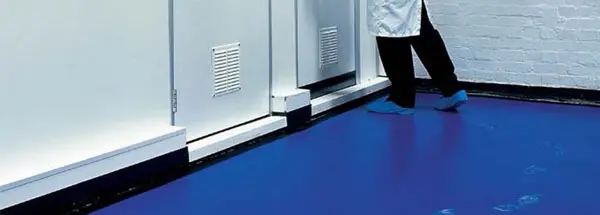
December 2019
EPOXY FLOORING FOR YOUR PHARMACEUTICAL CLEANROOMS
A pharmaceutical company is a commercial business licensed to research, develop, market and/or distribute drugs, most commonly in the context of healthcare.
Pharmaceutical Industries are at the forefront of scientific progress. Working endlessly to produce, test and research about medications and treatments for better health and life of patients, these industries must ensure cleanliness by avoiding any percentage of contamination. Pharmaceutical research often involves the use of a wide range of concentrated chemicals and dynamic organic compounds, exposing the floor to hazardous germs and bacteria as part of daily operations.
One common way that contaminants are able to enter a facility is on the shoes of our scientists. Dirt, dust, and microbes cling to shoes and then are tracked onto the floor, where they can then be spread throughout the facility by further foot traffic. Having proper shoe covering protocols in place can help to keep this under control. However, cracks in flooring, grout lines, and seams between sheets make it easier for contamination to occur.
Flooring
One of the best ways to avoid contamination and maintain hygiene in pharmaceutical industries is flooring. Flooring, in general terms, refers to a permanent covering of a floor.
Let’s now evaluate a wide spectrum of benefits that flooring mats provide and how June enterprises contributes in delivering you the most unmatched customized epoxy flooring equipment for better working conditions in pharmaceutical controlled environments.
Benefits of Flooring:
1. Prevents contamination – Its reduced floor and air particle / microbial counts prevent over 99% of contamination from entering your critical area
2. Chemical resistant surface – Flooring mats are easy to clean thereby resisting oils, acids and solvents
3. Cost effective – Available in a range of low profile edging systems, June enterprise’s polymeric flooring mats improve yield, cost savings and profitability while reducing the risk of high product rejection rates
4. Improves safety – Its flame retardant feature makes it safe for the researchers to work with flammable substance
5. Increases productivity – Its slip resistance and castor chair resistance makes material movement faster and smoother without any damage to the floor or materials
6. Pleasing surface – Besides being safe and highly productive, flooring also provides a beautiful surface for our researchers to work on. After all, working in a safe and beautiful domain provides peace of mind which leads to efficiency.
Flooring Mats
It is commonly thought that using disposable, adhesive peel off mats, tacky mats or sticky mats is the answer to contamination control. However, tests show that peel off mats are only 27% effective in preventing foot and wheel borne contamination. What you are looking for is Polymeric Mats.
Polymeric flooring is widely used in pharmaceutical, biomedical, automotive, food and healthcare industries. In comparison with other products on the market, levels of particles removed from footwear and retained on flooring were highest for polymeric flooring when compared with a range of different adhesive mats.
The Epoxy flooring and polymeric floor mats by Dycem have been scientifically proven to be the most effective, long lasting and high performance method of minimising contamination that traps up to 99.9% of foot and wheel-borne particulates. With being available in a range of sizes to meet individual needs, then can also accommodate both small corridors and large cleanrooms. Our polymeric mats are environment and pocket-friendly as they can be recycled into less critical applications at the end of their life-cycle and provides controllable and proven lower running costs directly and indirectly.
At June enterprises, we deliver you these efficient epoxy flooring and polymeric floor mats that not only comply with the cleanroom standards but also let you be rest assured regarding it quality and durability. If you too deal with pharmaceutical manufacturing and looking for quality and convenient epoxy flooring and polymeric floor mats, then do connect with us. We are always here to assist you throughout the process.
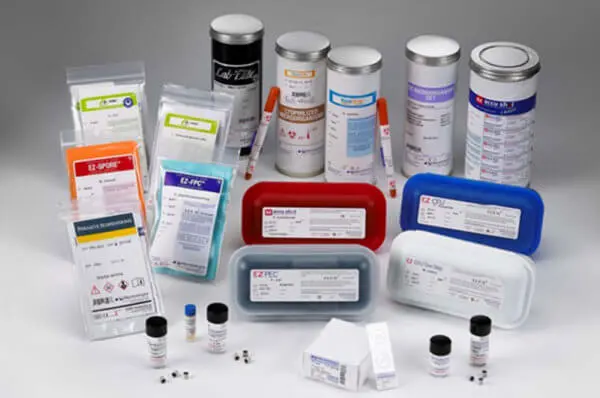
December 2019
QUALITATIVE AND QUANTITATIVE LYOPHILIZED CULTURE
Pharmaceutical Industry strictly follows Good Manufacturing Practices which is driven by quality production and accurate hygiene control. Most pharmaceutical manufacturers rely on quality control applications that are convenient to use saving both time and money and also helping them reduce the risk of contamination. Lyophilized culture is one among those quality control products.
What is Lyophilized Culture?
The process of lyophilisation was initially developed in 1906 and the technique currently applied by NCTC is an adaptation of the method used during World War II to preserve and transport blood serum. Lyophilisation or vacuum freeze-drying is the most commonly used method to preserve biological material like bacteria by desiccating the moisture from the sample. The process of lyophilisation involves initially freezing the sample and then drying it under a vacuum at very low temperatures. It is an application of physical phenomenon called sublimation which means, the transition of a substance from solid to a gaseous state without passing through the liquid phase. During the process, the water in the frozen sample is removed as water vapour, and not letting it thaw at all. Lyophilizing the bacterial cultures let the cultures stabilize for long-term storage while minimizing the damage by outer contamination. Lyophilized microorganisms survive for a good amount of time and are easily rehydrated and grown in culture method even after storing for a longer period. It is also very important to know the melting point of your sample or else it can melt during the lyophilisation process.
Lyophilisation quality control cultures are suitable for use in assay validation, product testing and proficiency testing. The bacterial strains are supplied majorly as lyophilised cultures in glass ampules which have been flame-sealed under vacuum. In pharmaceutical laboratories, routine QC analyses are necessary to ensure product quality and safety as well as the health and well-being of patients and consumers. As these lyophilized products are convenient, they are also equally economical and most importantly, they are reliable and consistent.
Difference between Qualitative and Quantitative Lyophilized Culture:
In Qualitative Lyophilized Culture, the materials represent a wide breadth of species or phenotypic, genotypic or functional characteristics which can be used to provide a yes/no answer.
Whereas, Quantitative Lyophilized Culture provides numerical information about the sample.
Being a responsible pharmaceutical manufacturer, one should always rely on certified reference material like LAB ELITE™ strains lyophilised microorganism and other ready to use strains of lyophilised microorganisms.
The quality assurance products by Microbiologics are available in a wide range qualitative and quantitative Lyophilized microorganisms that includes LYFO DISK™, KWIK STIK™, KWIK STIK PLUS™, Epower™ CRM and so on. If you too deal with pharmaceutical manufacturing and looking for quality and convenient lyophilised products for your QC analysis programme, then do connect with us. We are always here to assist you throughout the process.
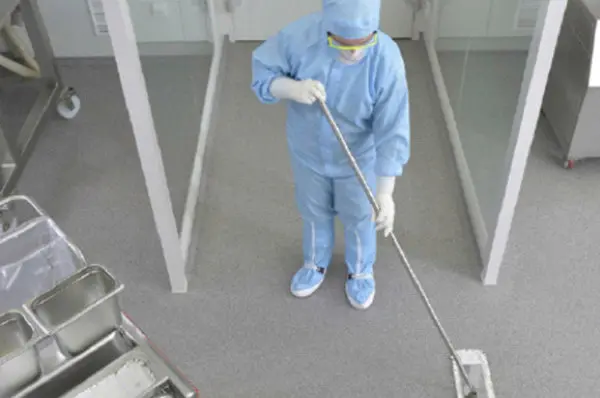
December 2019
CRITICAL CLEANING IN PHARMACEUTICAL CLEANROOMS
Cleaning validation in the Pharmaceutical Industry is paramount as far as human health and safety is concerned. The increasing demand for quality products to avoid health risks, and other pharmaceutical manufacturing factors have driven the Cleanroom Technology market growth globally. Critical Cleaning Chemicals used in cleanroom cleaning emphasizes a greater degree of environmental control than any other cleaning environment. Equipment that wouldn’t withstand longer if not cleaned properly are usually critically cleaned as it primarily focuses on removing submicron particles and non-volatile residues.
Why do you need clean Pharmaceutical processing equipment?
1. Cleanliness maintains product quality.
2. It abides by the local and international standards and regulations to ensure consumer safety and avoids further legal complications.
3. It boosts worker safety by providing a clean working environment to work in.
4. It maintains your brand’s reputation in the market.
The cleaning process must be cultivated carefully to achieve the most beneficial and cost-effective results. If you are a pharmaceutical company and find yourself confused about the usage of critical cleaners then have a look at the below crucial points to be considered before you jump into the critical cleaning regime of your Cleanrooms.
1. Determine the suitable cleaning method– Among all the cleaning methods like CIP, ultrasonic, manual, immersion, automatic systems and pressure washing systems, determine what suits your requirement accurately.
2. Choose a deep cleaning detergent– The active enzymes present in the critical cleaning detergent should be compatible with the floor and should leave it clean without damaging it. Avoid harsh chemicals like acid and alkaline cleaners on delicate substances, rather rely on cleaning chemicals with a pH below 10.
3. Treat your equipment gently– Choose Lubricants for critical equipment during autoclave that will not only lubricate them but also leave behind the protective coating. For removing stains from metal surfaces, go for rust and stain remover with effective enzymes. The more you treat your equipment with care, the cleaner environment you will attain.
4. Use the right concentration of detergent– Using too much detergent is as troublesome as using too less for critical cleaning. Analyze the surface you want to clean, the soil, the temperature and determine the suitable cleaning method before you zero down on using the amount of detergent, as the strength of the cleaning solution varies from detergent to detergent.
5. Set up the length of the cleaning cycle– Increase the dwell time and consider the required temperature of the cleaning solution, the concentration of detergent, cleaning method and type of water used to achieve the most efficient cleaning regime for any application.
6. Make rinsing a habit– It is always advisable to rinse thoroughly post applying detergent on your substance. Rinsing with deionized or distilled water removes any excess detergent left behind.
While choosing the best critical cleaners for your Pharmaceutical Cleanrooms, eliminate ‘a pig in a poke’ approach to attack the cleaning challenges. Settle down for the most effective and suitable cleaning methods and make sure the entire cleaning regime has been standardized and documented according to the FDA’s cGMP regulations.
As June Enterprises owes to serve you the best, you can always feel free to seek assistance from us for all your Pharmaceutical cleaning dilemmas.

December 2019
CLEANROOM CLEANING AND DISINFECTION
While operating in a highly-regulated Cleanroom industry, even the smallest of point matters and when you are dealing with the pharmaceutical industry, you need to maintain it wisely. Cleanroom is an area that should be cleaned in terms of both particle counts and microbial counts as defined in the International Cleanroom Standard ISO 14644 and in the second Cleanroom Standard ISO 74698 respectively. The regulatory requirements for the same are detailed by EU GMP and the FDA Guidelines.
Cleaning and disinfecting your Pharmaceutical Cleanroom is a crucial part of Good Manufacturing Practices along with protecting your pharmaceutical equipment from personnel contamination. It is always advisable to run gentle hands through your valuable materials and products to ensure that they don’t get damaged. Cleanroom supplies must meet your cleaning needs with sterile products that attributes to low endotoxin counts, fast-drying agents and maximum effects.
This blog examines the key steps to be followed in helping to keep your Cleanrooms clean.
Step 1- Understand the difference between Cleaning and Disinfection
Cleaning refers to the physical removal of dirt and dust with killing the germs dwelling on the surface. It is usually processed with cleaning detergents and other Critical Cleaning products. But, cleaning is always followed by Disinfection.
Disinfection refers to applying disinfectants that intimates the surfaces and kills maximum bacteria within five minutes of exposure. Disinfectants are available in two chemical compounds- Denatured Ethyle Alcohol (DE) and (IPA) that are bactericidal, fungicidal and virucidal but they are not effective against bacterial spores. To combat this exception, the sterile disinfectant solution is recommended for disinfecting your cleanrooms.
Step 2- Selecting the appropriate agents
Sterile NeutraClean is a non-foaming and a non-ionic solution that is specially deployed to remove dirt, dust and grease from a surface. Detergents reduces the surface tension by penetrating soils to allow its removal and hence, it should be applied prior to disinfectant. Because, the lower the degree of soil remains on the surface, the greater the results of disinfectants in cleanroom cleaning.
On the other hand, Sterile TechChlore solution is a perfect blend of hypochlorous acid and hypochloride ions, with limited pH value for higher effectiveness in disinfecting your pharmaceutical cleanroom. It is specially produced for the pharmaceutical surfaces that can withstand the harsh chlorine based disinfectants.
While selecting disinfectants for your Cleanrooms, always look in the following criteria:
1. Identify the surface you are going to apply disinfectant on, as not every pharmaceutical surface can withstand the harsh chlorine based disinfectants.
2. Your detergent should always be neutral, non-foaming and a non-ionic solution.
3. Your cleaning detergent should be compatible with your disinfectant so that it won’t inactive your disinfectant.
4. Similarly, your disinfectant should have a wide spectrum of activity to kill all the microorganisms with the rapid speed of action.
5. Your disinfectant should be compatible with your Cleanroom temperature.
6. It is advisable to know your materials before applying disinfectants on it. For an instance, chlorine based disinfectants can damage stainless steel material. Select the agent that suits your Cleanroom material.
7. Go for the result-oriented and cost-effective cleaning and disinfectant agents.
Step 3- Selecting the appropriate cleaning materials
Make sure you use cleaning materials that are Cleanroom certified and non-particle shedding like sterile and non-sterile wipes and non-woven and lint-free mops that would effectively help ease your cleaning and disinfection activity.
Step 4- Appropriate cleaning techniques
Analyze your pharmaceutical Cleanroom and apply the cleaning techniques that suits it, right from applying a detergent solution through wiping or moping to adding the accurate amount of disinfectant solution to the cleaning water. Use double or triple-bucket system that has wringer to avoid cross contamination while cleaning your cleanroom.
Step 5- Monitor your cleaning and disinfection efficiency
Until and unless you don’t get your desired results after cleaning, you should not settle down on your actions. It is highly recommended to monitor your cleaning techniques, agents and materials about how well it has been working in your Cleanroom cleaning program. Use the best hygiene control and analysis swab for environmental monitoring your cleanroom. Once you attain your desired results, you can say that your pharmaceutical cleanroom is ‘Clean’.
The above five-step approach towards Cleanroom cleaning program is not only result-oriented, but also associates with the GMP Standards and Regulations. Practicing this within the appropriate time period will help you keep your Cleanrooms clean.
For more details and customized product services, Contact us. We are here to assist you for your Cleanroom cleaning program.
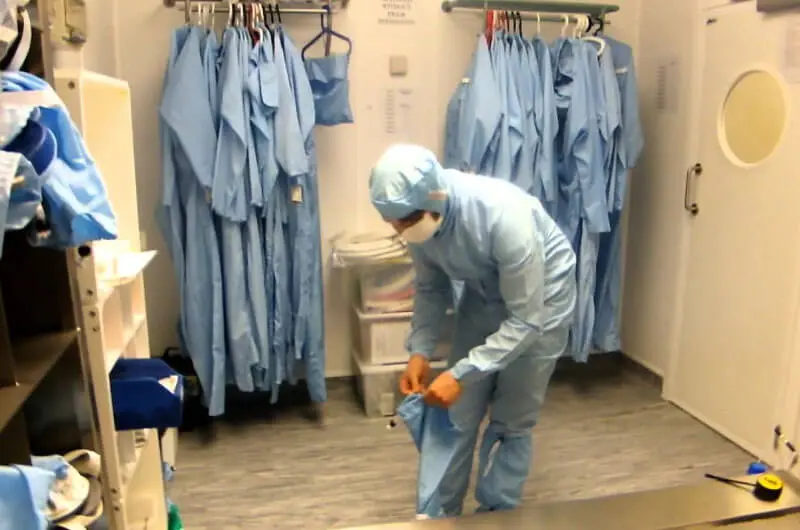
December 2019
THE IMPORTANCE OF PHARMACEUTICAL CLEANROOM CLEANING
What is Cleanroom?
Cleanroom is a controlled environment where different products are manufactured according to the industry requirement. The concentration of airborne particles in the cleanrooms is controlled to specified limits. The contaminations are usually generated by humans, processes, facilities and equipment and they must be removed from the air.
In the Pharmaceutical production, economical survival of the manufacturer depends on the safety of the finished product. So this makes it crucial for the Pharmaceutical Manufacturer to learn the importance of the Pharmaceutical Cleanroom cleaning and the potential sources of contamination with its effective solution.
The basic function of the Pharmaceutical cleanroom is to protect the manufactured products from contamination. The level of air cleanliness in the Pharmaceutical cleanroom must be regulated by standards like ISO 14644 as this document establishes standard classes of air cleanliness in terms of airborne particulate levels in cleanrooms and clean zones.
What are the sources of Pharmaceutical Cleanroom Contamination?
Being GMP the core motive of any Pharmaceutical Manufacturer, Cleanrooms needs to be really clean. Clean control environment not only prevents the company from contamination but also saves the company from losing its reputation in the Pharmaceutical Industry. What types of Contamination can turn off your Cleanroom essence?
1. 75% of Particulate Contamination happens through Humans- dust, skin, hair, makeup etc. The number of people working in the cleanroom has a direct behaviour on the quantity of air required to dilute and remove the airborne dispersion of contamination from their bodies. The efficiency of the protective cleanroom garments can control the influence of the contamination dispersed by the people. The more effective the cleanroom clothing the less exchange of contamination can ever take place in the air. Protective Cleanroom Garments Dress code like Coverall with hood, Goggles, Gloves for Personal hygiene keeps your manufactured products away from contamination. The temperature level of cleanroom ordinary is 20°C with an RH of 40% ± 5%. Fore moisture sensitive materials, it is required lower RH 25% ± 5%. These temperature levels are dependent on and has an impact of geographical location production and clothing worn. Thus dry bulb temperatures can vary in the range of 18°C to 22°C.
2. 10% of Chemical Contamination spreads through Room structure and Equipment- Oil, grease, Metal ions perfumes etc. Critical cleaning products like Detergents, lubricants and rust & stain remover for stubborn dirt and Wiping and mopping systems enables the Pharmaceutical cleanroom combat against the dangerous contamination.
3.15% of Biological and Radiation Contamination that happens through ventilation are Bacteria, fungi, rodents, ultraviolet light etc. The effective Sterile IPA and Disinfectants works like a magic wand that kills all the microbial contamination in the Pharmaceutical Cleanroom.
What are Cleanroom Standards?
Cleanrooms are generally classified by the cleanliness of air, in terms of safety, reliability, quality and efficiency levels of Cleanroom environment. The history of cleanroom standards dates back in the year 1961, when Technical Manual 00-25-203, the first cleanroom standard was made by the order of American Air Force in USA. In 1963, the first document, Federal Standard 209 of cleanroom facilities regulation was published and entitled as “Clean Room and Work Station Requirements, Controlled Environments”.
The International Organization for Standards (ISO) was published in 1999 that officially replaced Federal Standard 209. This ISO is used in almost all the European and Asian countries to connect all cleanroom requirements as 14644-2 (2000), 14644-4 (2001), 14644- 5 (2004), 14644-7 (2004), 14644- 8 (2006), 14644- 9 (Draft International Standard).
ISO 14644 for Standard for Airborne particulate cleanliness classes in cleanrooms and clean zones.
ISO 14698 for Cleanrooms and associated controlled environments like Bio-contamination control
What are Pharmaceutical Cleanroom Manufacturing conditions?
1. Sterilized medications manufacturing must be organized in cleanrooms equipped with air chambers for personal access or moving equipment and materials.
2. Original package and product preparation and filling must be done in the detached cleanrooms to minimize risk of product contamination.
The overall cleanliness of the Pharmaceutical Cleanroom is imperative because impurities can cause defects in the products.
What are best Cleanroom practices one can include?
1. A thorough cleanroom gowning requirement and procedures to be developed for avoiding personal contamination.
2. To protect cleanroom and the workers from contamination, ensuring the correct and effective cleanroom supplies in the cleanroom cleaning setting.
3. Training cleanroom personnel on behavioural standards to avoid carelessness and ignorance to cleanroom cleaning.
4. Frequent cleanroom auditing and assessments for the improvements and precautions to major Cleanroom dilemmas.
The object behind developing a contamination-free Pharmaceutical cleanroom is to achieve appropriate microbiological cleanliness levels for the classes of cleanroom for an appropriate period of time. The cleaner the cleanroom environment the safer the Pharmaceutical production. The importance of Pharmaceutical Cleanroom cleaning lies in better health and better living. If you are Pharmaceutical manufacturer and want to attain maximum purity in your Control environment, you can seek Our assistance. We are here to guide you through and through in your Good Manufacturing Practicing.

December 2019
REUSABLE VS. DISPOSABLE CLEANROOM GARMENTS
Every cleanroom garment is as essential as pharmaceutical products from the safety and hygiene perspective. Nearly all the Pharmaceutical companies often oscillate between choosing the two types of Cleanroom PPE garments for their workers- Reusable Vs. Disposable Cleanroom Garments.
The basic concern behind learning the difference between the two and their degree of importance is proportional to maintaining Good Manufacturing Practices in pharmaceutical industry. As in our surrounding, there are several million bacteria particles carried contagiously through air, water and touch, the primary function of cleanroom garment is to act as a resistance filter to protect products and humans from hazardous infections according to ISO 14644-5. For both the two types of garments, adequate protection is achieved only when they meet regulatory standards by organizations like ISO/IEC 17025- Testing and Calibration laboratories, Association for the Advancement of Medical Instrumentation, Indian National Infection Control Guidelines etc.
Let’s evaluate the difference between Reusable cleanroom garments and disposable or single use cleanroom garments.
Reusable cleanroom garments
• Reusable cleanroom garments are made up of woven fabric material and meant to last through multiple uses.
• They are made from polyethylene terephthalate that is fully recyclable for maximum times with minimal impacts to the environment.
• Because of its densely woven fabric like pima cotton with a thread-count of at least 270 or 280 or a very tight woven 1005 polyester fabric, Reusable cleanroom garments can stand up to 75 washings and sterilization cycles before disposing permanently.
• The material used here is permeable to water vapor that provides generous fit and maximum comfort.
• Operators of Class 1 (ISO Class 3) semiconductors facilities opts for high-quality Reusable cleanroom garments to minimize particulate and molecular contamination.
• The advances in reusable garments and the availability of hi-tech specialist cleanroom laundries are making non-disposable clothing a more cost-effective option
Disposable cleanroom garments
• Disposable cleanroom garments are made up of non-woven material and most of them are made from spun-lace, melt brown polyethylene, polyester fiber blend or a spun-bonded and intended for single use.
• Manufactured from a fabric that filters human-dispensed contamination to the pharmaceutical products and cleanrooms.
• These are manufactured from lightweight, low-threading and durable material that caters to excellent amalgam of comfort and protection.
• Sterile Operating facilities tends to opt for disposable garments due to the contamination concerns.
• The purchase of disposable cleanroom garment is cost affordable and it hardly affects environment.
Though both the types of cleanroom garments hold their own range of usage and importance, it is imperative to choose the perfect type of garment for your pharmaceutical company.
If you are a pharmaceutical company and want to learn about the same, contact us at https://www.juneenterprises.com/ for all your dilemmas.

December 2019
QUALITY ASSURANCE AND QUALITY CONTROL IN INDIAN PHARMACEUTICAL INDUSTRY
The Pharmaceutical Industry holds a very important role in production, development and marketing of medications with a sheer responsibility of Human healthcare. It is also seen evaluating day by day due to globalization, increased competition, cost constraints, demands for efficacy, international regulation, supply chain competition and product as well as process complexity. With this comes along quality concerns of the pharmaceutical equipment and products that have direct contact with the humans. Thus, Quality assurance and Quality Control is important in Pharmaceutical Industry to manufacture and deliver complete zero-defect products with the excellent quality, efficacy and safety for the consumers. Ignoring quality in pharmaceutical production is equal to risking human’s life and losing your credibility.
To never fall a prey to such loss, let’s understand the terminology of Quality Assurance and Quality Control with their importance in Pharmaceutical Industry: –
Quality Assurance is a concept of vouching that the pharmaceutical products are up to the quality level required for their intended use accounting to Good Manufacturing Practices. It is a company based concept and an international standard like ISO 9000 is considered as a guideline to vouch that a company’s QA system is effective and ready to be implemented. It is a planned and systematic activity that carries pereriodic conformance audits of the operations of the systems. Along with the Pharmaceutical Industry, food and biotech industries also need quality assurance products and FDA regulations to avoid the risk of the consumer’s health. Quality Assurance is a managerial tool that objectifies Product and Safety liability in Pharmaceutical Industry.
Quality Control is a part of GMP that refers to sampling, specification and testing organization’s documentations that does not release any pharmaceutical product without their quality test. It is a lab based detailed system with effective techniques of inspection and control covering the production, evaluation and distribution of every pharmaceutical product. Quality Control is a corrective tool that identifies the defects after the products are developed and before they are released. All the methods used by Quality Control are first sampled and then validated by having traceable records of all the pharmaceutical activities. This carries out either qualitative or quantitative analysis to determine the quality of the product.
Any Pharmaceutical manufacturer holds the responsibility to control the sources of product quality variation and assure that the testing results are in compliance with the standards and specifications with the product stability. If you are a Pharmaceutical Company and you have been looking out for Quality assurance and Quality Control products, then we got your back.
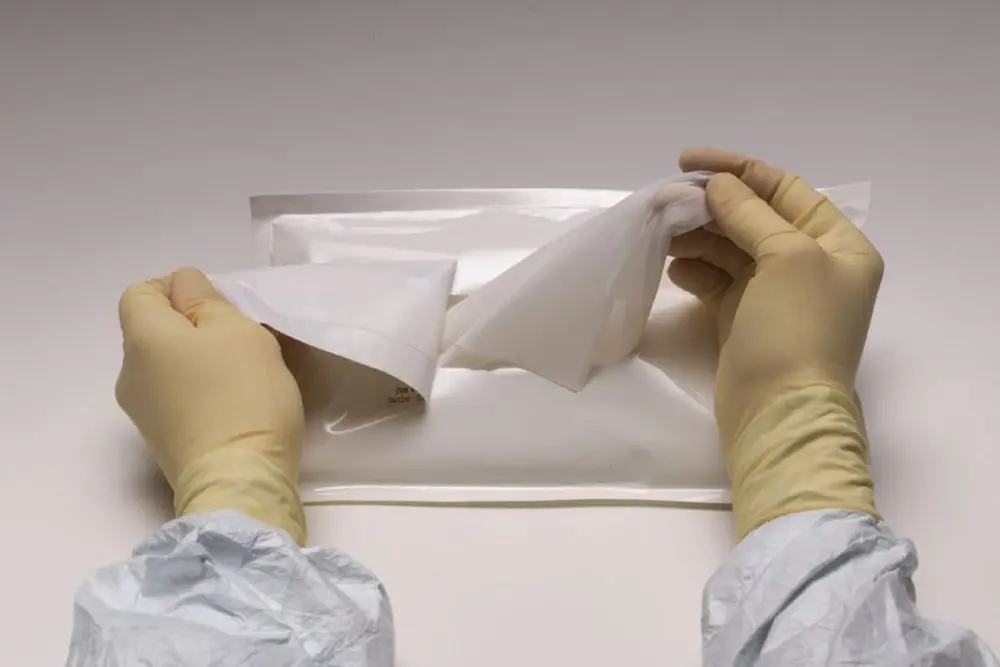
December 2019
TYPES OF CLEANROOM WIPES
With catering to best medical services, every company or hospital should also inculcate Good Hygiene Practices to curb on the health risks. The fundament of hygiene begins from using the best cleaning equipment and cleanroom supply for your clean room or controlled environment that includes cleaning wipes, sterile, non-sterile and autoclavable tools.
Cleaning wipes are lint free clothes that wipes away maximum dirt and surface contamination. It is always advisable to learn the difference between types of cleaning wipes available in the market as they revolutionize your cleaning experience. When choosing an appropriate wipe, you should define your requirements as: –
Do you want your wipes to be for dry or wet cleaning?
Do you want lint-free cloth wipes?
Do you want soft wipes that won’t damage your products?
Do you want your wipes to be resistant against chemicals?
After evaluating your requirements, you can hunt for the suitable cleaning wipes for your clean room classification. Thus, to enlighten our readers with the importance of room cleaner, we are listing down the types of cleaning wipes with their uses: –
Polyester Sterile Cleanroom Wipes
Polyester Cleanroom Wipes or double-knitted dry wipes are the cleanest level of wipes that are widely used in ISO 4 Class 10 and ISO 5 Class 100 cleanrooms. These sterile wipes are made up of 100% filament sterile polyester that have knife cut, laser sealed and ultrasonically cut sealed edges to reduce contamination.
Advantages:
Polyester Wipes-sterile have good absorbency with price performance ratio that emits minimal particles.
They are strong and non-shedding to be used in the most critical applications
They are soft and non-abrasive to be Gamma irradiated for sterility
Polyester Non-sterile Cleanroom wipes
Polyester non-sterile wipes are made up of 100% polyester knitted in a double-knit interlock pattern that caters to excellent absorption and wiping efficiency. These polyester wipes- non-sterile are double bagged that absorbs and retains solvents and chemicals.
Advantages:
Polyester Non-sterile Cleanroom wipes are anti-abrasive with soft texture
They have superb wet strength
They are ultra-lint-free wipes.
Non-woven Sterile Dry cleanroom wipes
Non-woven Dry wipes are sterile, poly-cellulose and lint-free with excellent absorption properties. These non-woven-sterile wipes are either thermally bonded through melt brown material extrusion or made up of blended hydroentangled fibers.
Advantages:
Non-woven Dry cleanroom wipes are economical, durable autoclavable with resistance against harmful chemicals.
They are highly sorbent and exceptionally soft that works well with Isopropyl Alcohol and other solvents.
They are non-scratching and have good absorbency.
Non-woven non-sterile wipes
Non-woven non sterile wipes are made up of 55% cellulose and 45% polyester that works well with Isopropyl Alcohol and other solvents. They are manufactured and packed in a controlled environment of ISO 7 Class 10,000.
Advantages:
Non-woven non-sterile wipes have excellent absorbency and durability.
They are lint-free wipes.
They are perfect for spill control and general-purpose wiping.
Sterile Wipes
Sterile IPA wipes are polynit heat sealed and pre-saturated with 70% USP grade I IPA and 30% WFI. These sterile wipes are Gamma irradiated and validated to a sterility level of 10-6 that caters to maximum efficacy for cleaning and sanitizing clean rooms.
Advantages:
Sterile Wipes is an everyday and specialized contaminated control challenge from critical surface to modular clean room cleaning.
They are perfect for use in aseptic suites that leaves extremely low residue.
They are economic and ready to use paired with sterile IPA liquid and Autoclavable spray bottle
As all the cleaning requirements vary from clean room to clean room, you need to identify your requirement and choose the correct cleaning wipes for your clean room classification.
Thus, for all your clean room dilemmas, June4GMP has got your back. Contact us to enhance your clean room design.
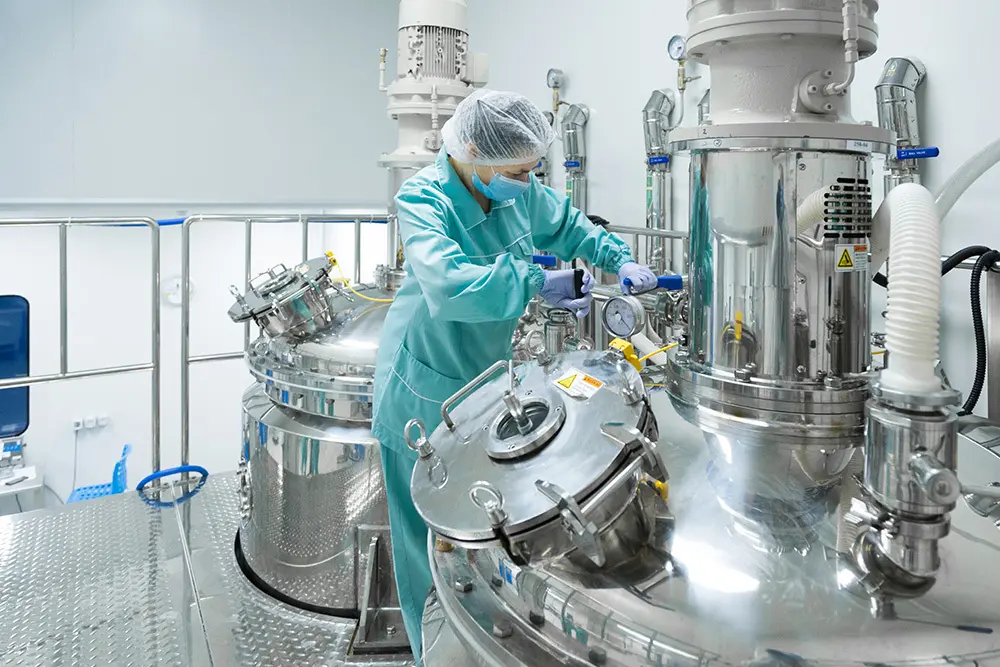
December 2019
PHARMACEUTICAL STERILIZATION
As an adage says- ‘Cleanliness is a state of purity, clarity and precision’, how careful are we regarding cleanliness in whatever we do? Because little that we know is, the microorganisms like infectious germs that lives almost in every corner of the earth are the main cause of spreading compromising and debilitating diseases. Though there are different ways of killing these microorganisms, it is impossible to prove that all of them are destroyed permanently. To avoid any kind of health dilemmas in the Pharmaceutical industry itself, Good Manufacturing Practices have become imperative to serve best to the world. Right from industry’s premises, people, infrastructure to its manufacturing facilities, cleanliness should be prioritized by all the top pharmaceutical companies.
Sterilization is a process of removing objectionable microorganisms and controlling microbial population in Pharmaceutical industry that requires temperature, gases,
humidity and pressure levels used in, are accurately monitored to ensure validity and efficacy. To gauge the survival level of the microorganisms after purifying the substances, sterilization effectively renders surfaces and equipment free from dangerous germs. It also prevents the growth and spread of diseases. Every Pharmaceutical company must also learn the basics of sterilization with its glossary.
Listed down are the types and methods of Sterilization used in Pharmaceutical industry.
Thermal or Heat Sterilization Methods
In heat method of sterilization, the longer the exposure to heat the better is the sterilization at a given temperature so that heat can be in touch with microbes and destroy harmful enzymes. The heat method of sterilization is again bifurcated in two types.
1. Dry Heat Sterilization
Dry Heat (160-1800°C) Sterilization refers to removing heavy molecular pyrogen from a solution of pharmaceutical vials. Thermo-stable products like metal instruments, needles and petroleum products that can withstand high temperatures are often sterilized on dry heat because they are degraded when exposed to steam or moisture. These are different types of dry heat sterilization-
Hot air oven that heats coils on the bottom is used differently according to the type of equipment.
Incineration burns disposable medical waste. In microbe cultures, the metallic end of the loops are heated to red hot on the flame to kill all the germs.
Flaming refers to exposing objects to direct fire or flame to kill the microbes and dust on the equipment.
Dry heat is applicable for sterilizing glass wares and metal surgical instruments.
2. Moist Heat Sterilization
Moist Heat (121-1340°C) Sterilization refers to applying heat in the form of steam or just boiling to moisture-resistant materials. Saturated steam acts as an efficient sterilizing agent.
a. Steam sterilization or Autoclave is achieved by exposing the equipment to be sterilized with saturated steam under pressure. Steam boosts the ability to heat to kill microorganisms by reducing the time and temperature required to coagulate proteins in the microorganisms. Steam sterilization goes through 3 phases during its process: –
In Conditioning phase, air is removed from the chamber by gravity displacement or dynamic air removal methods thus, the load is heated to the prescribed sterilization temperature.
In Exposure phase, the heated load is exposed to steam to the prescribed sterilization temperature at the set time that follows the device manufacturer’s recommended standards and guidelines.
In Exhaust phase, steam is removed from the autoclave chamber and the pressure inside the chamber is released. This phase is also known as the cool-down or drying phase as a vacuum is driven out to remove the steam that helps the load to dry.
The proper steam system construction and maintenance, its utility supply including good steam and water quality, steam boiler and few other factors accounts to effective steam sterilization process.
Moist heat is applicable for decontaminating laboratory waste and sterilizing laboratory glassware, media and reagents.
b. Radiation Sterilization with high energy gamma rays or accelerated electrons is the most useful method through ionizing nucleic acids for the industrial sterilization of heat-sensitive products. Radiated UV light with its low energy and poor penetrability are NOT SUITABLE for sterilization of pharmaceutical dosage forms.
Radiation refers to exposing packed materials to radiation for sterilization. Further this method is divided into two types: –
Non-ionic radiations used like ultra violet radiations at the door entrances to prevent entry of live microbes through the air.
Whereas, Ionizing is a powerful radiation used for sterilization
c. Filtration Sterilization removes the microorganisms from both viable and non-viable particles for clarification and sterilization of liquids and gases. While sterilizing grade filter are used in aseptic areas, membrane filters are used for sterility testing.
Chemical Sterilization Methods
Pharmaceutical devices that are sensitive to the high heat and might be damaged by irradiation are chemically sterilized.
1. Gaseous Sterilization
Gaseous sterilization is a process of penetrating ability of gases through alkylation, used widely to process heat-sensitive devices.
In ETO or EO Sterilization, Ethylene Oxide is a gas used in Gaseous sterilization is 1.5 times heavier than air and can gravitate along the floor. It is colorless and odorless below 500 ppm and smells sweet above same ppm concentration. The ETO or EO sterilization is like dry sterilization used to sterilize those equipment or devices that are operated with electricity, usually wrapped with plastic lining and cannot tolerate the influence of steam. Like steam sterilization, ETO or EO sterilization too goes through three phases during its process: –
To provide an ideal growing environment to the bacteria, Environmental Preconditioning is a crucial phase so that endospores will become exposed to the ethylene oxide.
The ETO or EO processing phase includes steps like initial evacuation, nitrogen dilution, conditioning, ETO or EO injection and dwell, ETO or EO removal, nitrogen wash and air in-bleed.
Initial evacuation and nitrogen dilution removes at least 97% of the oxygen from the sterilization chamber.
Conditioning step heats and humidifies the sterilization load whereas, sterilant injection & dwell introduces the validated sterility level of EO to the sterilization load for a specified amount of time.
Sterilent removal & nitrogen washes removes ethylene oxide from thee sterilization chamber and product packaging, through nitrogen injection
Air in-bleed brings the sterilization vessel to atmospheric pressure so that the sterilizer doors can be opened.
In Aeration phase, heated air is continuously circulated through the aeration area. To eliminate remaining EO from the sterilization load, residual gases are removed through an abatement system.
Pharmaceutical Sterilization is a must-learning aspect for every Pharmaceutical manufacturer and supplier in order to top this industry competition. If you belong to Pharmaceutical industry, make it a habit of using finely sterile equipment that have direct application on humans and animals. To learn more about sterilization monitoring and validation, June4GMP is a click away to assist you. Contact us at.

December 2019
DIFFERENCE BETWEEN CLEANROOM GLOVES AND SURGICAL GLOVES
Any layman would think that all gloves are created equal. But, that is not the case. Though it is quite an unpopular fact, disposable gloves are available in a wide variety, each designed to serve a different purpose. Gloves are an essential part of medical procedures and it is imperative that the correct glove type be used for its intended application.
Mostly, disposable gloves are of two types – cleanroom gloves and exam gloves – used in cleanroom environments and in doctors’ offices respectively. Though their manufacturing processes are alike, the post-manufacturing process is what sets them apart.
CLEANROOM GLOVES SURGICAL GLOVES
Cleanrooms are classified depending on the applications they are used for. They are especially manufactured for clean environments or controlled environments. The main purpose of surgical gloves that are used in operation theatres is to mainly prevent infection from bacteria.
These gloves are used by pharmaceuticalmanufacturers, because for injectables, the gloves not only need to be sterile, but also low in particulates. The ultimate purpose of sterilising surgical gloves to be used in operating theatres is to prevent infection from bacteria which would otherwise be present on the gloves.
Cleanroom gloves need to be used in highly sterile environments and are hence designed and processed according to stringent standards. Unlike cleanroom gloves, there is not much emphasis on the production and packaging of surgical gloves.
To ensure a high level of cleanliness, the gloves are washed in highly filtered deionized water. The rinsing process is repeated as many times as it is required to reach the desired cleanliness level. Powder free examination gloves are produced by two methods. They are either dipped into a polymer coating or are chlorinated on line before stripping them off the glove formers. Since the chlorination takes place only inside the glove, they contain a lot more bacteria than cleanroom gloves.
The gloves are packed in bags with polyethylene inner wrappers which are also made in a cleanroom. These gloves are sealed in paper pouches and packed into cardboard boxes which have a tendency to shed particles when opened.
It is imperative that the person designating the gloves knows a) what level of execution is required to coordinate their procedure, and b) what the prerequisites of the wearers are as cleanroom gloves are available in varied materials, distinctive shapes, diverse lengths, distinctive thicknesses and different textures and levels of grip. For a few applications, the determination of the right glove will be clear however for others a bit more work might be required. Any experienced maker of cleanroom gloves will have the capacity to give specific details, guidance and samples to help choosing cleanroom gloves for specific applications.
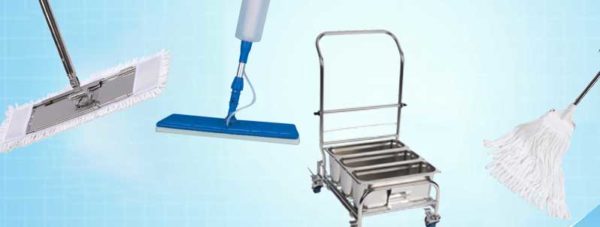
December 2019
CLEANING THE CLEANROOM – DISPOSABLE OR REUSABLE MOPS?
When we think of cleanrooms, the only things that come to our mind are gloves, wipes, and garments. But to keep a cleanroom efficient and functional, one must identify in a proper mopping system based on class 2 category.
Cleanroom cleaning may be a tedious process what with being fully gowned and indulging in a manual task. Different areas need different cleaning methods and contamination that can’t be seen, is particularly challenging to handle.
According to several GMP guidelines, the cleaning systems, including mops, must already be sterile or sterilisable, resistant to common disinfecting agents and easy to clean. They must meet purity requisites and must not hamper the production process or the product produced.
A mop cleaning system must ensure reduced costs while maintaining the required environmental standards. With two types of mop cleaning systems – disposable and reusable, it’s always a tussle between which one is better suited for your cleanroom environment.
DISPOSABLE MOPS
- Disposable mops are hassle free to use. They’re used to clean certain areas and are then downgraded to be used in less critical areas or discarded away. By sampling metrics of the area cleaned, it is validated if the area is sterile.
- Disposable mops, in such cases, provide consistent performance and since they are less likely to be exposed to variable contaminants and conditions, their validation process is simplified.
- Disposable mops ensure high efficacy. They reduce the risk of cross contamination and ensures that there is no contamination in the cleanroom environment at the end of a session.
- Disposable mops may reduce cross contamination, but they do not come cheap.
RESUSABLE MOPS
- Reusable mops too are required to undergo initial testing to see if they match the environment and application requirements. But with reusable mops, there are long term risks that must be considered.
- There is no way for a laundry to know which contaminants a reusable mop has been exposed to. Also, with each wash and reuse, the quality of a reusable mop will eventually be degraded.
- The quality and performance of reusable mops deviates over time from its initial performance projection because conditions (surfaces, frequency, etc.) for each consumer are different. This can put the customer’s cleanroom at risk and this risk can only be assessed through periodic revalidation.
- Reusable mops are cost-effective, but should meet all the validation requirements, must be barcoded and their efficacy must be regularly tested as the autoclave or irradiation cleaning process could render some materials brittle and wear the mop out sooner than predicted.

December 2019
DIFFERENCE BETWEEN CLEANROOM GLOVES AND SURGICAL GLOVES
Any layman would think that all gloves are created equal. But, that is not the case. Though it is quite an unpopular fact, disposable gloves are available in a wide variety, each designed to serve a different purpose. Gloves are an essential part of medical procedures and it is imperative that the correct glove type be used for its intended application.
Mostly, disposable gloves are of two types – cleanroom gloves and exam gloves – used in cleanroom environments and in doctors’ offices respectively. Though their manufacturing processes are alike, the post-manufacturing process is what sets them apart.
CLEANROOM GLOVES SURGICAL GLOVES
Cleanrooms are classified depending on the applications they are used for. They are especially manufactured for clean environments or controlled environments. The main purpose of surgical gloves that are used in operation theatres is to mainly prevent infection from bacteria.
These gloves are used by pharmaceuticalmanufacturers, because for injectables, the gloves not only need to be sterile, but also low in particulates. The ultimate purpose of sterilising surgical gloves to be used in operating theatres is to prevent infection from bacteria which would otherwise be present on the gloves.
Cleanroom gloves need to be used in highly sterile environments and are hence designed and processed according to stringent standards. Unlike cleanroom gloves, there is not much emphasis on the production and packaging of surgical gloves.
To ensure a high level of cleanliness, the gloves are washed in highly filtered deionized water. The rinsing process is repeated as many times as it is required to reach the desired cleanliness level. Powder free examination gloves are produced by two methods. They are either dipped into a polymer coating or are chlorinated on line before stripping them off the glove formers. Since the chlorination takes place only inside the glove, they contain a lot more bacteria than cleanroom gloves.
The gloves are packed in bags with polyethylene inner wrappers which are also made in a cleanroom. These gloves are sealed in paper pouches and packed into cardboard boxes which have a tendency to shed particles when opened.
It is imperative that the person designating the gloves knows a) what level of execution is required to coordinate their procedure, and b) what the prerequisites of the wearers are as cleanroom gloves are available in varied materials, distinctive shapes, diverse lengths, distinctive thicknesses and different textures and levels of grip. For a few applications, the determination of the right glove will be clear however for others a bit more work might be required. Any experienced maker of cleanroom gloves will have the capacity to give specific details, guidance and samples to help choosing cleanroom gloves for specific applications.
